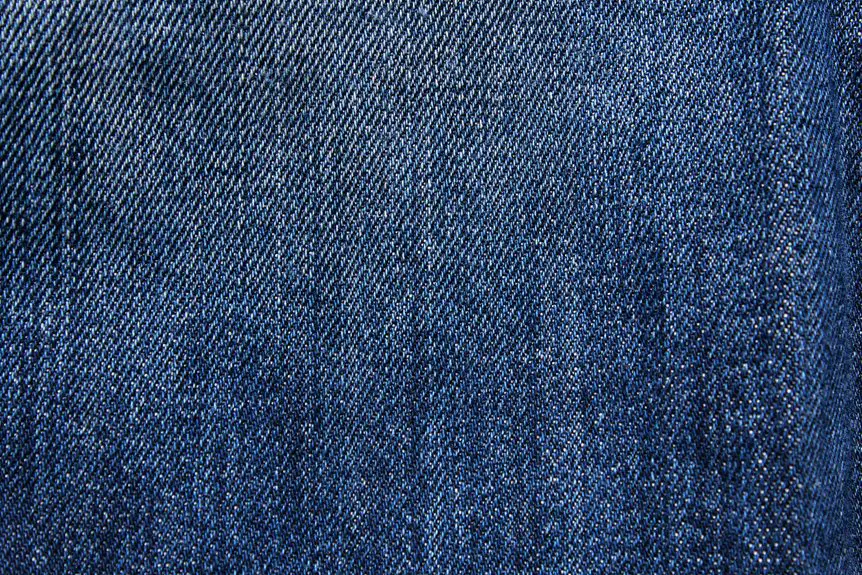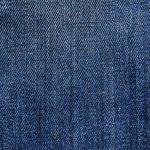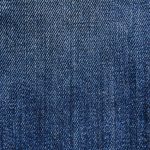If you want a softer, stretchier fabric that feels silky and handles abrasion well, polyamide is your go-to, though it tends to cost more and absorb moisture more. Polyester feels a bit stiffer, resists wrinkles, dries quickly, and is easier on the budget. Both resist wear and tackle moisture differently, so your choice depends on comfort and purpose. Keep exploring to understand how these fibers differ in care, environmental impact, and everyday use.
Table of Contents
Key Takeaways
- Polyamide fibers are softer, more elastic, and offer better abrasion resistance, making them ideal for activewear and high-wear applications.
- Polyester fibers dry quickly, wick moisture efficiently, resist wrinkles, and have superior UV and mildew resistance compared to polyamide.
- Polyamide production consumes more energy and emits more nitrous oxide, while polyester manufacturing uses less energy and generally has a lower carbon footprint.
- Polyester is more affordable and widely available due to large-scale production, whereas polyamide is costlier with fluctuating market availability.
- Both fibers contribute to microplastic pollution, but polyester is more commonly recycled, making it a more sustainable option environmentally.
Chemical Composition and Manufacturing Process
Although both polyamide and polyester are synthetic fibers, they differ markedly in their chemical composition and manufacturing processes.
Polyamide and polyester, both synthetic, vary significantly in their chemical makeup and how they’re made.
You’ll find that polyamide, commonly known as nylon, is made from repeating units of amides linked by peptide bonds. Its production involves polymerizing diamines and dicarboxylic acids through condensation reactions.
Polyester, on the other hand, mainly consists of ester functional groups formed by polymerizing diols and dicarboxylic acids via esterification. When you manufacture polyester, processes like melt spinning turn the polymer into fibers.
Polyamide fibers are typically produced through melt or solution spinning. Understanding these differences helps you appreciate why each fiber behaves uniquely and suits distinct applications, even before considering their physical traits.
This chemical foundation shapes everything from performance to production costs, affecting what you might choose for your needs.
Physical Properties and Durability
Two key factors you’ll notice when comparing polyamide and polyester are their physical properties and durability.
Polyamide, also known as nylon, feels softer and silkier to the touch, making it comfortable against your skin. It’s highly elastic, which means it stretches without losing shape, ideal for activewear.
Polyester, on the other hand, is more rigid and has a slightly rougher texture, but it resists wrinkles and holds color well over time.
When it comes to durability, polyamide excels in abrasion resistance, so it’s great for tough, high-wear items.
Polyester shines in resisting UV damage and is less prone to mildew.
Both fibers are strong, but your choice depends on whether you value stretch and softness or rigidity and UV stability.
Moisture Absorption and Breathability
Moisture management plays an essential role in how comfortable you feel wearing polyamide or polyester fabrics.
Moisture management is key to comfort when choosing between polyamide and polyester fabrics.
Both materials handle moisture differently, affecting breathability and how dry you stay. Polyester tends to wick moisture away from your skin faster, making it a favorite for activewear.
Polyamide, on the other hand, absorbs a bit more moisture, which can sometimes make it feel less breathable but softer against your skin.
Here’s what you should consider:
- Polyester dries quickly, keeping you cooler during workouts
- Polyamide offers better moisture absorption, suitable for moderate activity
- Both fabrics resist water retention, preventing heavy, soggy feeling
- Breathability varies with fabric construction, not just the fiber type
Understanding these traits helps you pick the right fabric for your needs.
Environmental Impact and Sustainability
When you compare polyamide and polyester, you’ll notice differences in production emissions that affect the environment.
You’ll also want to contemplate how each fabric breaks down or can be recycled after use.
Understanding these factors helps you make a more sustainable choice.
Production Emissions Comparison
Although both polyamide and polyester are widely used synthetic fibers, their production processes differ greatly regarding emissions.
When you consider their environmental footprint, you’ll notice polyester generally emits fewer greenhouse gases than polyamide. This is largely because polyester production relies more on petroleum derivatives with a less energy-intensive polymerization process.
Meanwhile, polyamide manufacturing often involves higher energy consumption and releases nitrous oxide, a potent greenhouse gas.
Here’s what you should keep in mind:
- Polyester emits roughly half the greenhouse gases compared to polyamide.
- Polyamide production consumes more energy due to complex chemical reactions.
- Nitrous oxide emissions from polyamide contribute considerably to global warming.
- Both fibers depend on fossil fuels, but polyester’s process is slightly greener.
Choosing between them? Consider this emissions gap carefully.
Biodegradability and Recycling
Understanding the emissions involved in producing polyamide and polyester gives you part of the environmental picture, but how these fibers break down and can be reused is just as important.
Polyamide, commonly known as nylon, takes decades to biodegrade, which means it lingers in landfills and oceans. Polyester, made from petroleum-based products, also resists natural decomposition, contributing to microplastic pollution.
However, both materials can be recycled. Polyester is widely recycled into new fibers or other products, making it a bit easier for you to find sustainable options. Polyamide recycling exists but is less common and often more energy-intensive.
When you choose recycled polyester or polyamide, you reduce waste and save resources. Keep in mind, though, neither fiber is truly biodegradable, so recycling remains your best bet for minimizing environmental impact.
Common Uses and Applications
Both polyamide and polyester find their way into a wide range of products you use daily.
You’ll notice polyamide, often called nylon, in activewear and outdoor gear because it’s strong and elastic. Polyester, on the other hand, is popular in everything from clothing to home furnishings due to its durability and resistance to shrinking.
You’ll commonly encounter these materials in:
- Sportswear and swimwear for flexibility and quick drying
- Upholstery and curtains for lasting strength and colorfastness
- Industrial fabrics like ropes and tire cords for toughness
- Packaging and bottles, where polyester excels in clarity and durability
Knowing where each fiber shines helps you pick the right product for your needs, whether it’s for comfort, performance, or longevity.
Care and Maintenance Tips
When you care for polyamide and polyester properly, you can extend their lifespan and keep them looking their best.
For both fabrics, use a gentle wash cycle with cold or warm water to prevent damage. Avoid bleach and fabric softeners, as they can degrade fibers.
Polyester dries quickly, so air-dry or tumble dry on low heat. Polyamide is more sensitive to heat, so opt for air-drying to avoid shrinking or warping.
Air-dry polyamide to prevent damage; polyester can be tumble dried on low heat or air-dried.
Iron polyester on a low setting if needed, while polyamide usually doesn’t require ironing. To prevent pilling or snagging, turn garments inside out before washing and avoid rough surfaces.
Store both materials in a cool, dry place to prevent mildew and maintain fabric integrity over time.
Cost and Availability Comparison
When choosing between polyamide and polyester, you’ll want to contemplate their price differences and how easy they’re to find.
Polyester generally costs less and is more widely available in stores and online.
Understanding these factors can help you make a smarter buying decision.
Price Differences Overview
Understanding the price differences between polyamide and polyester can help you make smarter purchasing decisions.
Generally, polyester tends to be more affordable due to its widespread production and simpler manufacturing process. Polyamide, on the other hand, often costs more because of its higher durability and specialized applications.
Here are key points to evaluate:
- Polyester is cheaper and widely available, making it budget-friendly.
- Polyamide commands a higher price but offers superior strength and elasticity.
- Production costs for polyamide are higher, impacting retail prices.
- Availability can fluctuate, but polyester remains consistently accessible.
Market Accessibility Trends
Although both polyamide and polyester are popular in the textile market, their cost and availability trends differ markedly, affecting how easily you can access them.
Polyester is generally more affordable and widely produced, making it easier for you to find in various forms and quantities. Its large-scale manufacturing guarantees consistent supply chains, so you rarely face shortages.
On the other hand, polyamide tends to be pricier due to more complex production processes and raw material costs. While polyamide is available globally, its supply can be more sensitive to market fluctuations and demand shifts.
If you prioritize budget and ease of procurement, polyester is your go-to. But if you need specific qualities polyamide offers, you might’ve to navigate slightly higher costs and more limited availability.
Frequently Asked Questions
Which Fabric Is Better for Allergy Sufferers?
If you suffer from allergies, you’ll want fabrics that resist dust mites and irritants. Both polyamide and polyester are hypoallergenic, but polyester often repels moisture better, helping reduce allergens and keeping you more comfortable overall.
How Do Polyamide and Polyester Affect Static Electricity?
You’ll notice synthetic fabrics often generate static electricity, making clothes cling. Both polyamide and polyester can cause static buildup, especially in dry conditions, so you might want to use fabric softeners or humidifiers to reduce static shocks.
Can Either Fabric Be Recycled More Efficiently?
Wondering which fabric dances better in the recycling loop? You’ll find polyester’s widely recycled, making it easier on the planet. Polyamide can too, but it’s trickier, so you’ll want to check local recycling options first.
Which Fabric Has Better UV Protection?
You’ll find polyester generally offers better UV protection because its fibers absorb less UV radiation. While polyamide provides some defense, polyester’s structure blocks more harmful rays, keeping you safer in the sun.
Do Polyamide or Polyester Fabrics Fade in Sunlight?
Ever wondered why some fabrics lose color faster under sunlight? Both polyamide and polyester can fade, but polyester resists UV damage better. So, if you want lasting color, polyester’s usually your safer bet.







